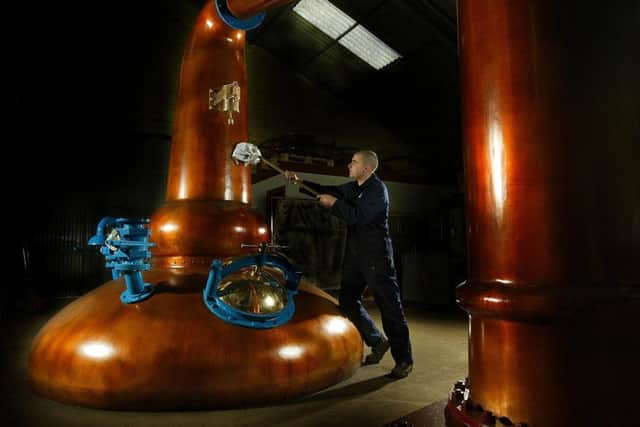Innovative spirit refuses to stand still


If, like me, you enjoy a good single malt, the chances are you will be familiar with at least some of Speyside’s world-famous whiskies.
Brands such as Macallan, Glenlivet, Glenfiddich, Mortlach and Benromach embody centuries of whisky-making tradition and deliver a little bit of Moray around the globe.
Advertisement
Hide AdAdvertisement
Hide AdBut even old and well-established industries do not stand still – and a major expansion is quietly taking place today on the banks of the river whose name has become synonymous with high quality whisky.
Speyside is leading the way when it comes to investment in Scotch whisky, with almost a quarter of a billion pounds spent or pledged in the last three years.
Figures compiled by the Moray Economic Partnership (MEP) show around half of the 50 working distilleries on Speyside have been, or will be, expanded or upgraded, while there are plans for at least two new distilleries.
Among the developments are a new distillery and visitor centre for the Macallan.
Owner Edrington has commissioned the architects who designed Lloyd’s of London, the Millennium Dome and Terminal 5 at Heathrow to design and build a £100 million complex.
Meanwhile, Diageo is expanding or upgrading eight of its distilleries at a cost of £70m, including Mortlach where it is investing £30m in additional production capacity, Glendullan, Linkwood, Mannochmore, Dailuaine, Benrinnes, Inchgower, Cragganmore and Glen Elgin. Glendullan and Inchgower are among three possible sites for a new Diageo distillery.
Chivas Brothers, which is owned by Pernod Ricard, is spending around £50m on a new distillery near Carron, re-opening the mothballed Glen Keith distillery and upgrading five of its existing distilleries – Glenlivet, Glenallachie, Longmorn, Glentauchers and Tormore.
Some of the other developments include:
• Speyburn – Owner Inver House Distillers is investing £4m in doubling capacity at the distillery near Rothes.
Advertisement
Hide AdAdvertisement
Hide Ad• Benromach – Owner Gordon & MacPhail is investing a seven-figure sum in expanding production at the distillery at Forres, including recruitment of a third distiller and a brand manager and the construction of two warehouses.
• Glenfiddich – William Grant and Sons is to build a green energy plant on a site next to the Dufftown distillery to produce biogas from spent malted barley and pot ale to provide heat and steam for the distillery.
• Speyside Gas Pipeline – this joint venture between Chivas Brothers, Diageo and Angus Dundee is to replace the heavy fuel oil used at the Glenlivet, Tormore, Cragganmore and Tomintoul distilleries with natural gas.
The investment, much of which benefits small companies in communities along the river which are contracted to carry out the work, is to help the industry meet rapidly increasing global demand for whisky.
Last year the equivalent of 1.23 billion bottles of whisky were exported, worth £4.3bn to the Scottish economy.
But concerted efforts are also being made to lure more visitors to Speyside – and whisky is a key part of the attraction.
For example the Craigellachie Hotel, with its world-renowned Quaich Bar, which has more than 650 types of malt whisky, has reopened after a multi-million pound refurbishment.
It is gratifying that the whisky industry, a key part of the Moray economy, is expanding.
Advertisement
Hide AdAdvertisement
Hide AdFor millions of people, especially in the Far East, growing income has brought with it a desire for luxury products such as the kind of Scotch whisky produced on Speyside.
Many of Speyside’s distilleries are expanding to cope with that increased demand four, five and six years down the line.
But it is also pleasing that distilleries and hotels in the area see the potential for bringing more visitors to this wonderful part of the world.
The MEP, a public-private partnership, was established to help diversify the Moray economy, which has traditionally been focused on whisky, food and defence.
That doesn’t mean we ignore our successful industries – instead we look to build on our strengths and examine how we can broaden the benefits they bring. I think we are seeing that approach reflected in these figures produced by the MEP.
• John Cowe is chairman of Moray Economic Partnership
SEE ALSO